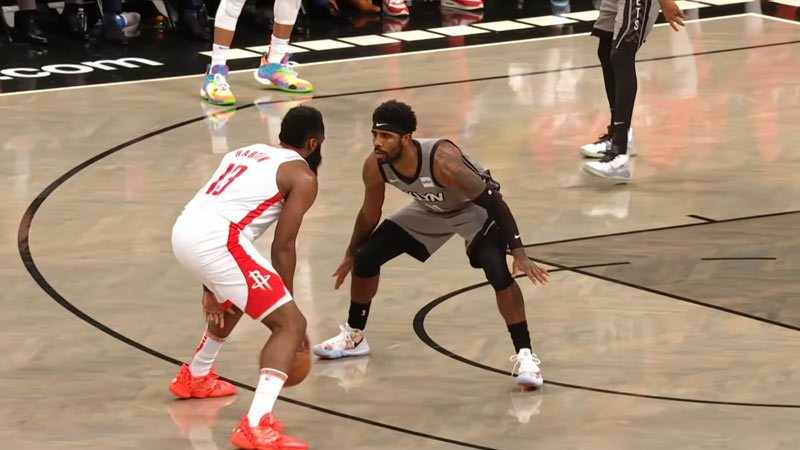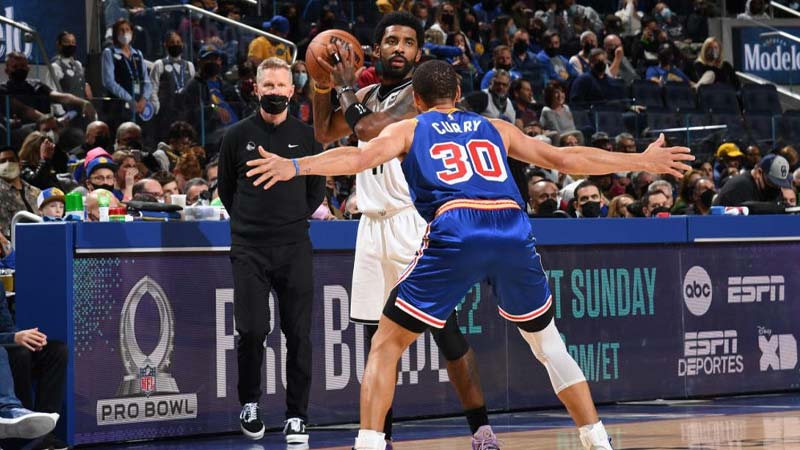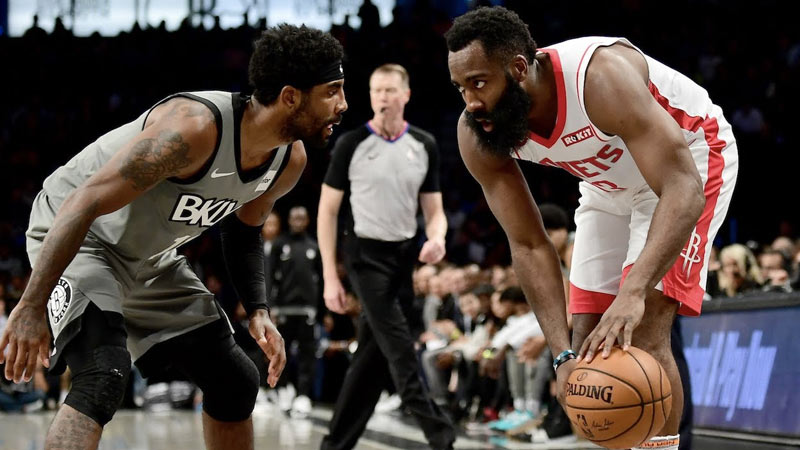Basketball is a sport that combines athleticism, skill, and strategy, and one key tactic that often comes into play is none other than isolation. So, both players and fans should know about it in detail.
Isolation, commonly referred to as “iso” in basketball jargon, is a play designed to give a single offensive player an opportunity to score in a one-on-one matchup.
In this blog post, we will delve into the intricacies of isolation in basketball, exploring its setup, role in team strategy, advantages, disadvantages, and historical context. So, stay focused.
What Is Isolation in Basketball?
Isolation in basketball is a strategic offensive play that aims to create a one-on-one matchup between a player and their defender. It is often used for perimeter players or dominant scorers who possess exceptional individual skills.
In an isolation play, the rest of the team clears out from the area near the ball, creating spacing on the court. This clearing out of teammates allows the isolated player to have more room to operate and showcase their individual skills.
The objective of isolation is to exploit the offensive player’s skills and create a favorable matchup against their defender.
By eliminating potential help defenders, the isolated player has the opportunity to use their athleticism, ball-handling, and scoring ability to attack the basket or create a scoring opportunity.
The absence of other offensive players in the immediate vicinity reduces congestion, giving the isolated player more freedom to make decisions and showcase their individual skills.
How to Set Up an Iso in Basketball?
To set up an isolation play in basketball, the team must create spacing on the court, allowing the isolated player to have enough room to operate and take on their defender.
Spacing in basketball is crucial because it prevents help defenders from easily collapsing onto the isolated player, giving them the freedom to showcase their skills and create scoring opportunities.
Creating spacing involves the strategic positioning of the other players on the court. They need to position themselves in a way that draws defenders away from the isolated player, creating gaps and openings for them to exploit.
This can be achieved by having players move to the corners or wings, away from the immediate vicinity of the isolated player. By doing so, they force defenders to make a decision between staying with their assigned player or providing help on defense.
Proper communication among teammates is vital when setting up an isolation play. Players need to communicate their intentions and actions to ensure everyone is on the same page.
The Role of Isolation in Team Strategy

Isolation plays are not only about giving a player the opportunity to showcase their individual skills, but they also play a significant role in the overall team strategy.
Let’s explore some key subpoints to understand the benefits of isolation in team strategy:
Exploiting Mismatches
Isolation plays can be especially effective when a team identifies a favorable matchup between their skilled offensive player and a defender who may struggle to contain them.
By isolating the player with the advantage, teams can exploit the mismatch, giving the offensive player a higher chance of scoring or creating opportunities for their teammates.
Collapsing the Defense
When an isolation play is executed successfully, it puts significant pressure on the opposing defense. As the isolated player engages in a one-on-one battle, it forces the defender to commit more attention to that player.
This collapsing of the defense opens up opportunities for other offensive players to get open or make cuts to the basket, creating scoring chances.
Creating Scoring Opportunities
Isolation plays provide the isolated player with the freedom to utilize their offensive skills without interference from their teammates. This can lead to the creation of scoring opportunities through dribble penetration, post-up moves, or perimeter shooting.
The offensive player can use their individual skills to get past the defender and finish at the rim or create open shots for themselves.
Drawing Fouls
One significant advantage of isolation plays is the ability to draw fouls. Skilled offensive players can take advantage of the one-on-one situation by using various techniques such as pump fakes, quick changes of direction, or initiating contact with the defender.
This often results in the defense committing fouls, giving the offense extra scoring opportunities from the free-throw line.
Disrupting Defensive Rotations
Isolation plays can strategically disrupt the rotations of the opposing defense. When a skilled offensive player has the ball in isolation, defenders are forced to make decisions.
The defenders may hesitate to leave their assigned player, creating open passing lanes and opportunities for the isolated player to find open teammates for uncontested shots.
Isolation plays are not only about empowering individual offensive players but also serve as a valuable tool in team strategy.
By isolating a skilled player, teams can exploit mismatches, force the defense to collapse, create scoring opportunities, draw fouls, and disrupt defensive rotations.
Advantages and Disadvantages of Iso in Basketball

Source: sportsbrief.com
Like any strategy in basketball, isolation plays have their advantages and disadvantages. Here we will discuss them in a brief manner.
Advantages
Isolation plays have their advantages. So, check some of them out below.
Showcasing Individual Skills
Isolation plays provide an opportunity for elite offensive players to demonstrate their individual skills.
Skilled players with exceptional ball-handling, shooting, and scoring abilities can use isolation to their advantage, allowing them to showcase their talents and create scoring opportunities.
This can be particularly effective when facing a weaker defender or exploiting a specific matchup.
Exploiting Mismatches
Isolation plays can be used strategically to exploit mismatches in favor of the offensive team.
By isolating a player who has a significant advantage over their defender in terms of size, speed, or skill, the offense can create scoring opportunities.
This forces the defense to make difficult decisions, such as sending help defenders or allowing the isolated player to go one-on-one.
Drawing Defensive Attention
Isolation plays often draw defensive attention, as the isolated player becomes the primary focus of the defense.
This can create opportunities for the isolated player to attract double teams or collapses, which in turn opens up passing lanes and creates scoring opportunities for open teammates.
By drawing defensive attention, isolation plays can generate advantageous situations for the offense.
Disadvantages
Isolation plays have their disadvantages too. So, let’s check some of them out below.
Stagnation and Reduced Ball Movement
Isolation plays have the potential to lead to stagnation and reduced ball movement. When a player is isolated, the rest of the team tends to stand and watch, reducing the overall flow of the offense.
This lack of movement can make it easier for the defense to anticipate and disrupt the play, limiting the effectiveness of isolation.
Increased Defensive Pressure
Isolation plays often invite increased defensive pressure. The isolated player becomes the focal point of the defense, facing intense one-on-one defense or even double teams.
This can make it more challenging for the isolated player to create scoring opportunities and increase the likelihood of turnovers or forced shots. The increased pressure on the isolated player can also lead to fatigue over the course of a game.
Lack of Offensive Variety
Relying heavily on isolation plays can limit the offensive variety of a team. When a team becomes overly reliant on isolating a single player, it becomes predictable and easier for opposing defenses to prepare and counter.
A lack of offensive diversity can make it difficult to adjust to defensive strategies, particularly against disciplined and well-prepared teams.
Historical Context of Isolation in Basketball
Isolation in basketball refers to a strategy in which a player is given the opportunity to take on a defender one-on-one, with minimal involvement or interference from other players. The historical context of isolation in basketball can be traced back to several factors:
Evolution of the Game
Isolation plays have been a part of basketball since its early days, but their prominence and strategic significance have evolved over time.
As the game progressed and strategies developed, coaches and players recognized the potential benefits of isolating a skilled offensive player against a defender to exploit mismatches and create scoring opportunities.
Individual Skill Emphasis
The historical context of isolation in basketball is closely tied to the growing emphasis on individual skills and talent. Throughout the history of the sport, there have been exceptional players who possess extraordinary dribbling, shooting, and scoring abilities.
Coaches and teams recognized that isolating these players against defenders could maximize their impact on the game and lead to higher-scoring opportunities.
Rule Changes
Rule changes implemented over the years have also influenced the historical context of isolation in basketball.
For example, the introduction of the shot clock in the 1950s forced teams to play at a faster pace and find quick scoring options. Isolation plays became a viable strategy to create scoring chances within limited time frames.
The Era of Dominant Scorers
Different eras in basketball history have been characterized by dominant scorers who excelled in isolation situations. Players like Wilt Chamberlain, Kareem Abdul-Jabbar, Michael Jordan, Kobe Bryant, and LeBron James are examples of players who showcased their scoring prowess through isolation plays. Their success and impact popularized isolation as a strategic option for teams.
Defensive Strategies
The historical context of isolation in basketball is also influenced by defensive strategies employed by opposing teams. As defenses evolved and became more sophisticated, teams sought ways to counter defensive schemes such as double teams or zone defenses.
Isolation plays provided a way to break down defensive structures and create opportunities for individual offensive players.
Shifts in Team Dynamics
Throughout basketball history, there have been shifts in team dynamics that have influenced the use of isolation plays. In certain periods, teams relied heavily on individual stars, leading to an increased utilization of isolations.
In contrast, other eras emphasized team-oriented play and ball movement, which reduced the frequency of isolation situations.
The historical context of isolation in basketball can be attributed to the evolution of the game, the emphasis on individual skills, rule changes, the presence of dominant scorers, defensive strategies, and shifts in team dynamics.
Isolation plays have emerged as a strategic option to exploit individual talent and create scoring opportunities, contributing to the ever-evolving nature of the sport.
FAQs
Is isolation only used in professional basketball?
No, isolation plays can be utilized at all levels of basketball, from youth leagues to college and professional competitions. It depends on the team’s strategy and the individual skills of the players.
Are isolation plays suitable for every player on the team?
Not necessarily. Isolation plays are typically designed for players who excel in one-on-one situations and possess strong scoring abilities. Coaches often tailor their offensive strategies based on the strengths of their players.
Can isolation plays be effective against strong defensive teams?
While strong defensive teams may be adept at defending isolation plays, it can still be a useful strategy if executed properly. The ability of the isolated player to create scoring opportunities and draw defensive attention can open up opportunities for their teammates.
Can isolation play lead to selfish play?
There is a risk of isolation plays leading to selfish play if the isolated player becomes too focused on scoring and ignores open teammates. Proper communication and trust within the team are crucial to avoid this issue.
How can a team defend against isolation plays?
Defending isolation plays requires a combination of individual and team defense. Teams often employ strategies such as double-teaming, trapping, or forcing the isolated player into less favorable positions to disrupt their scoring opportunities.
Bottom Line
Isolation plays are an integral part of basketball strategy, offering a platform for individual brilliance and tactical advantages.
How to effectively set up isolations, weighing the pros and cons, and considering the historical context provides valuable insights for players, coaches, and basketball enthusiasts alike.
By incorporating isolation plays strategically, teams can unlock the full potential of their star players and create dynamic offensive opportunities, enhancing the excitement and competitiveness of the game. Thank you for your time.







